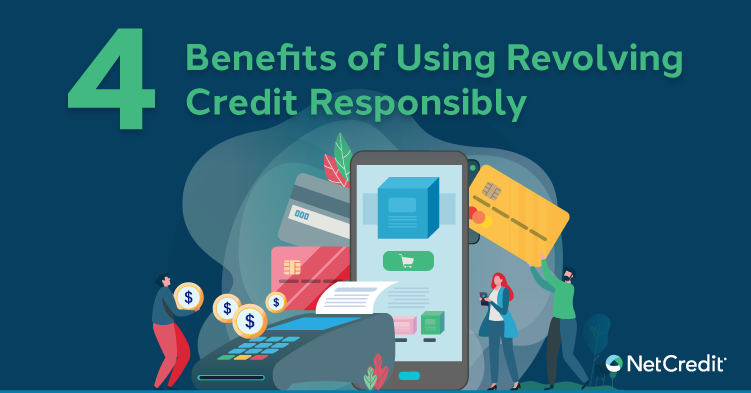Revolving credit can be a useful tool to help build your credit score and fund emergency expenses, but it’s important to understand how it works. This type of credit includes a line of credit or credit card, which provide ongoing access to capital up to your credit limit. Read our guide to learn more about revolving credit and how you can use it to improve your overall financial security.
1. You Build or Improve Your Credit Score
Your credit limit can have a big impact on your credit score. Unlike an installment loan (which does not affect your credit limit), revolving credit directly impacts your credit limit and usage ratio. Your credit usage ratio is defined as the total amount owed on all revolving credit accounts, divided by your total credit limit on all revolving credit accounts. Most experts recommend keeping your revolving credit usage ratio to 30% or less of the total credit limit. For example: If your total credit limit is $10,000, ideally, you would have no more than $3,000 in outstanding revolving credit debts.
If your credit usage ratio exceeds 30% of your total credit limit, it can negatively affect your credit score. On the other hand, keeping your credit usage ratio to 30% or less may help you maintain or improve your credit score over time. Additionally, opening a new credit line can help you lower your overall credit usage ratio by increasing the total credit limit across all revolving credit accounts, assuming you do not close any accounts. However, it’s important to remember to pay all bills on time, or your credit score may decrease.
2. You Can Access Money Fast
With a revolving line of credit or credit card, you can access up to your credit limit whenever you need to borrow money. Creditors like NetCredit offer fast, flexible lines of credit that you can draw from whenever your bank account is low (up to your credit limit). On the other hand, credit cards let you make purchases up to your credit limit, while some offer cash advance options at an additional fee.
3. You Can Borrow Money Again
Unlike an installment loan, a revolving line of credit provides continuing access to capital up to a certain dollar amount, or credit limit. As money is repaid, that amount is available for usage again. Revolving credit is a good choice for those who want a better sense of financial security since it provides an ongoing option if your emergency fund is low.
4. You Only Pay Interest on the Amount You Borrow
With revolving credit, you’re given a total credit limit, but you only have to pay interest based on the actual amount that you borrow. This means that you can borrow as much or as little as you need (up to your credit limit), but the fees and/or interest are only applied to the amount that you use.
The information in this article is provided for educational and informational purposes only, without any express or implied warranty of any kind, including warranties of accuracy, completeness or fitness for any particular purpose. The information in this article is not intended to be and does not constitute financial, legal or any other advice. The information in this article is general in nature and is not specific to you the user or anyone else.






